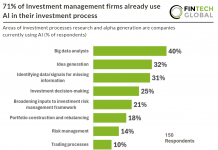The insurance sector is grappling with a pricing tool dilemma. A report from hyperexponential claims 81% of insurers express doubts regarding the effectiveness of their current pricing technologies. One of the main culprits? Excel.
The InsurTech company recently delved into the why the perfect formula for pricing tools does not include the use of Excel.
While Excel’s versatility and user-friendly nature have made it a staple for insurance and reinsurance pricing for years, its shortcomings are becoming increasingly evident. The intricacies of modern rating tools and underwriting demands render Excel-based systems vulnerable, affecting both their nimbleness and profitability potential.
As the nature of risks and portfolios evolves, becoming more multifaceted, there’s a pressing demand for resilient, integrated pricing tools that keep pace with market trends. The implications are clear: Excel’s reign is coming to an end.
There are five primary reasons driving forward-looking insurers to relegate Excel to the annals of pricing tool history:
1. Governance and Standardisation Issues with Excel Ensuring the reliability of your pricing tools means understanding their evolution. However, Excel systems are devoid of automated data recording or version control features. For actuaries to monitor model modifications, they must manually annotate changes in spreadsheet cells. Such a method renders audits problematic, especially if changes are poorly documented or forgotten. It’s telling that 47% of pricing actuaries find their existing tech challenging to audit and generate reports from.
Excel presents multiple hurdles in model validation and updates. Regression testing is seldom adopted due to its intricate setup. Furthermore, manual interventions often lead to errors, either from misguided inputs or hasty changes lacking proper oversight. There’s also the recurring issue of underwriters utilising locally stored, outdated models, misrepresenting current underwriting guidelines and tactics.
2. Excel’s Struggle with Complexity While Excel’s straightforwardness is commendable, it falters when tasked with pricing intricate risks. It grapples with large datasets and elaborate models, becoming sluggish and crash-prone. The stability of Excel pricing models diminishes with each connection to external files. Even basic tasks, such as renaming a file, can disrupt these connections. Moreover, intricate analyses that guide strategic modifications to rating tools become a challenge.
Moreover, deciphering complex Excel formulas, unlike more intuitive languages like Python, can be a daunting task. Legacy, multifaceted spreadsheet models, once their creators depart, often intimidate newer analysts.
3. Excel’s Disconnect from Data Ecosystems Leveraging Excel often means your pricing tools remain isolated from the broader organisational software ecosystem. This separation hampers analytical speed and rating tool accuracy. Though many insurers don’t view integrated data as a priority, the competitive edge offered by technological advancements means those neglecting data strategies will likely struggle with risk pricing.
4. Excel’s Collaboration Hurdles Excel isn’t conducive to collaborative efforts. Establishing feedback mechanisms between users and creators is laborious and prone to failures. Furthermore, manual peer review processes are typically delayed, often too late to impact the associated risk decision.
5. Excel’s Manual Intensiveness Due to its inherent limitations, spreadsheet-based pricing tools necessitate extensive manual intervention. Research indicates that underwriters dedicate roughly three hours daily to data entry alone, equivalent to nearly two full days weekly. Manual operations not only consume time but also heighten the risk of errors.
Read the full report here.
Keep up with all the latest FinTech news here
Copyright © 2023 FinTech Global











